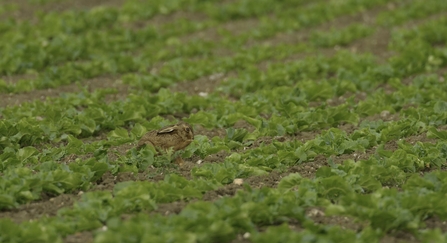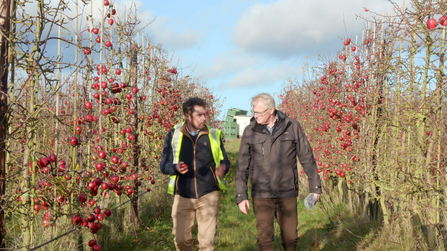Single crop systems lose out on the normal checks and balances found in nature where there is a mosaic of habitats. Decades of industrial agriculture and the resulting decrease in soil fertility has taught us that we cannot continue this way. Yields will only decrease as our intensification continues. This is why farmers have banded together in clusters, often helped by eNGOs) to re-diversify our landscape for this exact reason. The buzzword “Regenerative Farming” is often used to describe a set of five core principles:
-
maintain living roots;
-
protect the soil;
-
minimise disturbance;
-
diversify your cropping;
-
integrate livestock.
By restoring nature, farmers are not just improving their soils and agricultural output without the use of fertilisers, they’re providing natural-capital for the local economy to thrive too. A greener more biodiverse countryside prospers from tourism.
Farmers in Kent are at the forefront of this change and Kent Wildlife Trust are working with many to consult on land change and subsidy schemes. Find out more about our work with Kent-based Farmer Clusters here.
Resilience for the environment

Brown hare by Chris Gomersall/2020VISION
By joining forces, farmers are creating field margins and hedgerows which provide habitat for wildlife across large landscapes. These wildlife corridors are vital for species to thrive.
By planting trees around their water courses and reducing or eliminating chemical use, they’re regenerating rivers and streams, reducing soil erosion, silt build up and improving biodiversity.
By leaving low grade agricultural land to wildlife and rewetting land that has been drained, farmers are able to give back more than just food to the nation.
By reducing the use of pesticides, herbicides and fungicides, they’re providing food for the organisms in the soil and for birds that feed on arable seeds such as turtle doves or insect eaters such as flycatchers and cuckoos.
Resilience for farmers
Landscape resilience is not just a plus for nature. It helps farmers and landowners too. With rising costs of fertilisers, herbicides and pesticides, reduced usage saves money. That’s the bottom line.
Intensive practices such as ploughing the topsoil take away organic matter and leave the soil open to erosion barren. What remains is soil easily compacted in winter which can starve plant roots and give them little room to grow, resulting in the perceived need for more ploughing.

© Tim Horton
Regenerative practices improve organic matter in soils. Increased fungi, worms and bacteria give more nutrients to the plants without a need for fertiliser, their activity under the soil aerates the soil and reduces compaction. In return for giving back, farmers can improve their yields and the quality of their harvests.
By creating a more diverse landscape and letting nature into the environment, farmers can benefit from the natural processes. Herbicides are often not species specific and can kill more than they target which can reduce populations of pollinators providing useful services to flowering crops. By letting in more insects, you’re also bringing in the predators of the pests that can impact crops.
Where grazing of a single species occurs over a long period, the grass tends to become less complex, new scrub and woodlands fail to develop and the land begins to look like a bowling green.
Diversification is a less high stakes game which provides farmers more resilience through a wider range of profit streams.

© Michael Tulley
